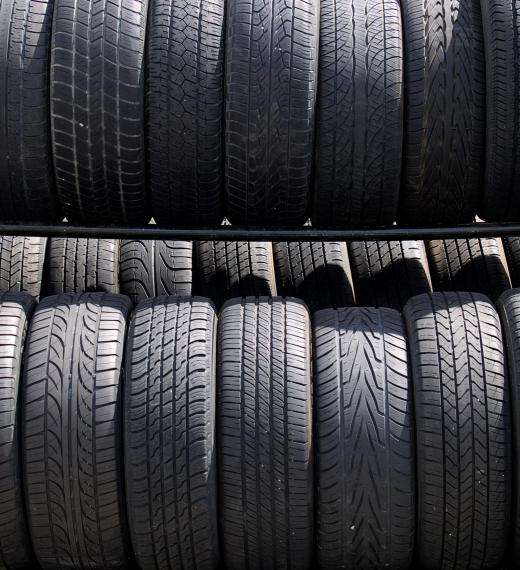Calendared rubber is part of your everyday life, even though you might not know what it is. Calendared rubber is made by drawing rubber through the small space between two rollers. The extreme pressure forms the rubber into sheets. Calendared rubber may also be made with steel or fabric, creating a composite material.
To see one primary way calendared rubber affects your life, take off your shoes and turn them over. The outsole, with its rubber tread, is most likely calendared rubber. In the shoe-making process, outsoles are made in whole sheets. The rubber is first run through smooth rollers, which flatten it so that it can be used as outsoles, and then a textured roller that imprints the tread design and any maker’s marks. Once the calendaring process is finished, the outsoles are cut from the rubber sheets – just like cutting cookies from freshly rolled dough.

Another way calendared rubber improves your life is by providing transportation: your car’s tires are made of calendared rubber. You may not know this, but your tires have steel belts within the rubber that help give them their shape and strength. The steel belts get inside the rubber through the process of calendaring: the steel belts are run through the rollers with the rubber on either side. The extraordinary pressure that the rollers put onto the steel and rubber causes the rubber to bond to the steel.

Calendared rubber can also contain materials other than steel. For example, calendared rubber is sometimes made with fabric inside of it. As in the tire-making process, the rubber is placed on either side of the fabric, and the three layers are run through the rollers together. Just as with tire rubber, the extreme pressures of the calendaring process cause the rubber to bond with the fabric.
Even your heroes rely on calendared rubber to provide them with their “super powers” – calendared rubber is used to make the strong, fire-resistant boots that firefighters wear. As you can see, calendared rubber touches your life in many ways, whether you realize it or not.
The calendaring process is used to make other things than calendared rubber. For example, paper is calendared in order to give it a smooth finish. The coating used on the paper and the amount of calendaring the paper goes through determine whether the finished product has a matte or glossy appearance. For a more coarse look, paper may be left uncalendared.
